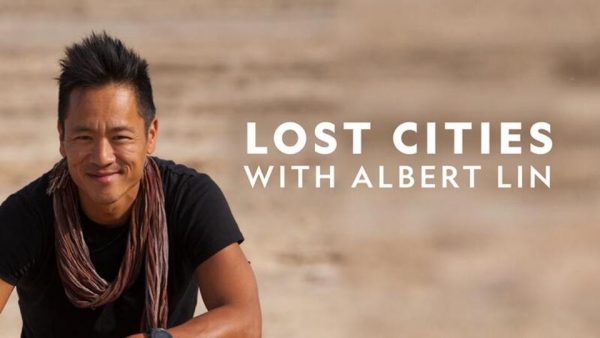Nat Geo ‘Lost Cities’ Merges Technology And History To Take Us Back In Time – Forbes

Lost Cities with Albert Lin airs on Nat Geo Monday nights at 9pm Eastern / 8pm Central.
Nat Geo
Many people consider history to be a boring subject. They don’t care about platitudes like the George Santayana quote, “Those who cannot remember the past are condemned to repeat it,” and they don’t find anything particularly fascinating about learning what happened hundreds or thousands of years ago. What’s happening right now on Instagram is infinitely more exciting than what happened in ancient Rome. Nat Geo and Albert Lin are here to change that perception by merging technology and history together in the new series Lost Cities.
A Passion to Explore
I had the privilege of speaking with Albert Lin about Lost Cities, and what drew him to do this series. Lin told me about growing up in Europe—living in Cambridge, England. His father was an astrophysicist and his mother was a musician, which allowed him to grow up with an intimate connection to both science and art, and with a healthy dose of curiosity to discover more about the world around him.
Lin went to school and graduated as an engineer, but he always maintained an interest in history as well. He told me that exploring history provides a window into the ancient human condition. That eventually drove Lin to combine his engineering background with his passion for history and find new ways to explore the past.
Time Traveling Super Powers
I am not one of the people who consider history to be a boring subject. I find it fascinating. The first episode of Lost Cities was especially interesting for me because it focused on the mysterious history of the Knights Templar. I’ve been drawn to fictional depictions of the Knights Templar—from Indiana Jones and the Last Crusade, to National Treasure, to Dan Brown’s The Da Vinci Code, and I was anxious to discover what Lin and the Nat Geo team were able to uncover.
The episode starts off focused on the city of Acre in Israel. The city is believed to have been a stronghold of the Knights Templar. Lin speaks with experts and scholars and explores underground passages in an effort to peel back the layers of time.
That’s where the technology comes in. About 12 minutes into the episode, it gets very interesting. Using drones and 3D laser scanning, Lin is able to overlay the current city of Acre on the underground labyrinth to find evidence about where the Knights Templar operated—and where they may have stored some of their mythic wealth.
Lin says in the episode, “I’ve combined both scans—above and below—and by combining the two, I gain super powers.” Using his tablet he is then able to seamlessly transition from viewing an aerial angle of the streets of Acre, and then panning down—through the streets—to the ancient underground passages.
The technology is the truly magical part of this whole thing. He told me that his team often designed applications and new features for their tools on the fly as they needed them while working out in the field. Lin had nothing but praise for his team—telling me that he felt lucky to work with such amazing talent and marveling at how the outcome is often greater than the sum of its parts.
The net result is mind blowing. Similar to what Nat Geo is able to accomplish in the Drain the Oceans series, combining underground LIDAR scans, ground penetrating radar, aerial drone footage, and other technologies enables the team to work magic like digitally deleting trees or buildings to reveal what something looked like hundreds or thousands of years ago.
Providing a New Perspective on History
That’s just one small part of the first episode, but the whole series is like that. Lin and the Nat Geo team worked in intense, challenging environments all over the world to combine exploration and technology to uncover mysteries of the past.
I brought up the idea that history is written by the victors. Lin disagreed, stating that history is written from perspectives. He said that every event has different ways of looking at it, and that how we perceive those events is filtered through the lens of our own morality and beliefs.
Ultimately, though, Lin stressed that our interest and wonder in history as human beings comes from the stories. Stories like the legends of the Knights Templar transcend time and evolve into their own mythology. It’s because the story has endured that there is interest to learn more about how the Knights Templar lived and to understand reality versus the fiction that has built up over time.
Lin told me that Lost Cities is about who we are and where we came from. He also emphasized that people should strive to be curious in general. He told me about taking his kids out on adventures on the weekends to explore and find rocks, and about discovering a rock with a fossil imprint of grass. He explained, “You don’t have to travel to the ends of the Earth to be an explorer.”
Lin summed up Lost Cities and ongoing efforts to merge history and technology, proclaiming, “We are at the very edge of a new ‘Golden Age’ of exploration.”
Nat Geo provided a sneak peek of Lost Cities on Sunday, October 20, followed by the official kickoff of the series on Monday, October 21. You can watch Lost Cities on Nat Geo on Monday nights at 9pm Eastern / 8pm Central.






